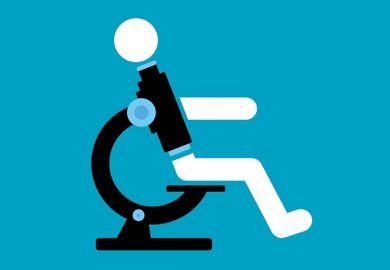I find it hard to think of dyslexia as a disability, in much the same way as I struggle to consider attention deficit hyperactivity disorder (ADHD) or Asperger’s syndrome a disability. When I meet anybody with those neurological differences, my first thought is, “What sorts of jobs would you outperform me in?”
Many years ago, a colleague of mine was the head of learning support at my college. Her husband was a recruitment manager for a large regional company. He tried to recruit dyslexic people because the things they were bad at, such as report writing, could be outsourced to a secretary or technology. The things that they were good at – creativity, big-picture thinking, social skills – were, however, in short supply. These are the skills he wanted in his managers.
And he’s not the only one. A marketing firm founded by a former Saatchi & Saatchi creative director, himself dyslexic, even advertised specifically for recruits with dyslexia, highlighting the debate about whether or not it should be considered a disability.
I see dyslexia as more of an educational disease than a disability: a condition brought on by a monoculture of text-based resources and writing-based activities. But it needn’t be that way, not least because technology can help us diversify teaching, learning and assessment.
Dyslexia has brought wonderful gifts to human culture and society – some of our most celebrated scientists, inventors and artists showed signs of dyslexia. But being compared with the likes of Einstein isn’t always helpful to dyslexics and we must remember to celebrate our own individual contributions.
So here, in recognition of that, are some ways professors can ensure that technology supports their students in making the most of their abilities rather than stumbling over their “disabilities”.
For dyslexic students, reading is helped by:
- Well-structured documents and web pages that can be rapidly skimmed using navigation tools such as the Microsoft Word navigation pane or the Headings Map plug-in for Chrome
- Text-to-speech plug-ins for browsers or the Learning Tools plug-in for Office 365
- Speed reading and decluttering plug-ins for browsers
- Textbooks in digital format to aid searching and navigation.
Assignment organisation and planning are helped by:
- A well-scaffolded course on the learning platform with relevant links to key resources
- Clear marking criteria made available in advance
- Effective use of the learning platforms’ communication and collaboration tools to ensure deadlines are known and progress is realistic
- Guidance in using mind mapping and note referencing tools like OneNote, EverNote, Keep or Zotero.
The assessment, writing and proofreading stage is helped by:
- Alternative types of assessment, such as creating videos, podcasts or posters
- Access to – and guidance in – voice recognition tools
- Effective use of headings, especially in Microsoft Word, where the navigation pane can also act as an interactive outlining tool, enabling a form of linear mind mapping
- Grammar and spellcheck tools, either inbuilt, browser plug-ins such as Grammarly, online services such as Hemingway or third-party free and commercial tools
- The use of text-to-speech for proofreading purposes.
In an organisation where all the above were a daily part of everyone’s digital competencies, it would be difficult to identify dyslexic students because the environment in which they work would have largely “undisabled” them.
At a conference I attended about 10 years ago, I learned about a medical school that decided to experiment with the assessment of one of its modules. Instead of a 2,000-word assignment, students would have to create a short video covering the same assessment criteria. They had several dyslexic students in the group whose marks always clustered near the bottom of the rankings.
When they looked at their results for the video assignment the cluster had disappeared, rising like helium balloons to the higher grades.
This was the point where I first understood that we are looking at some disabilities from the wrong end of the telescope. These young medical students were not disabled by their dyslexia but by their assessment.
Most universities and colleges would do well to ask themselves who has the real disability. If your learning platform is just a file storage area, your activities just about reading and note-taking, your assessments just a variation on the “research and write about” theme and your assistive technology marketed as a “disability aid”, then it is possible that you are institutionally disabled.
But don’t worry. It’s curable.
One option is to carry out an accessibility snapshot, such as one that we offer at Jisc, in which you role-play a technically savvy disabled student checking out your institution. The resulting insights signpost areas where you can make changes in your organisation.
In the meantime, it’s dyslexia awareness week in the UK. Start with the awareness that a student’s dyslexia is nothing to do with you. But their disability might be.
Alistair McNaught is a subject specialist for accessibility and inclusion at Jisc.
Register to continue
Why register?
- Registration is free and only takes a moment
- Once registered, you can read 3 articles a month
- Sign up for our newsletter
Subscribe
Or subscribe for unlimited access to:
- Unlimited access to news, views, insights & reviews
- Digital editions
- Digital access to THE’s university and college rankings analysis
Already registered or a current subscriber?




